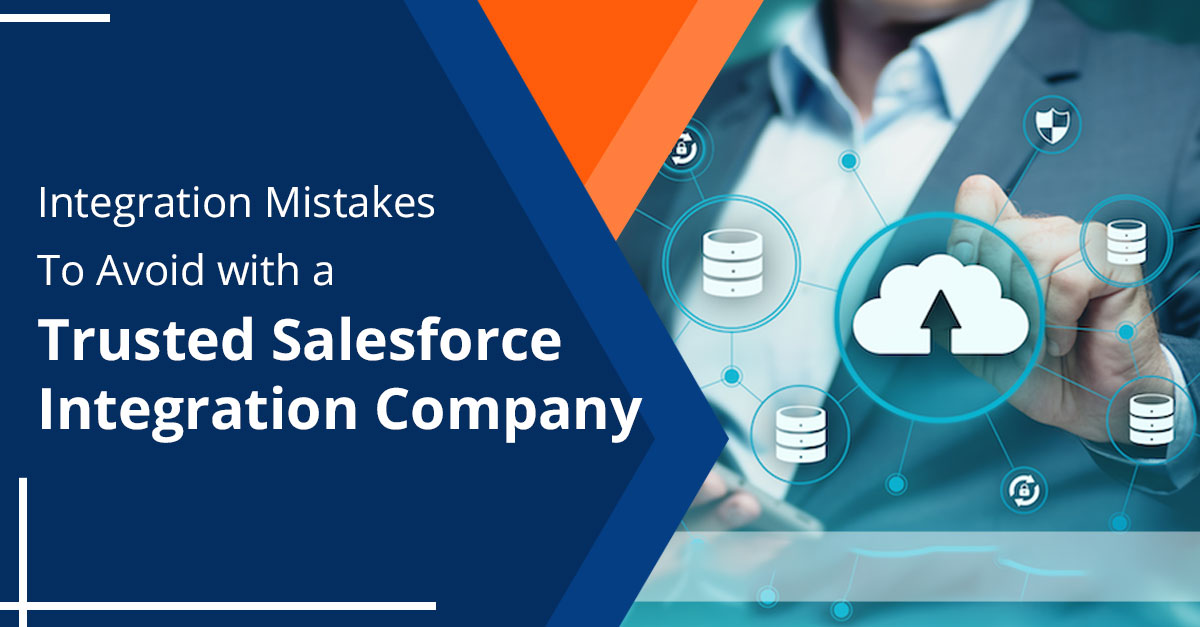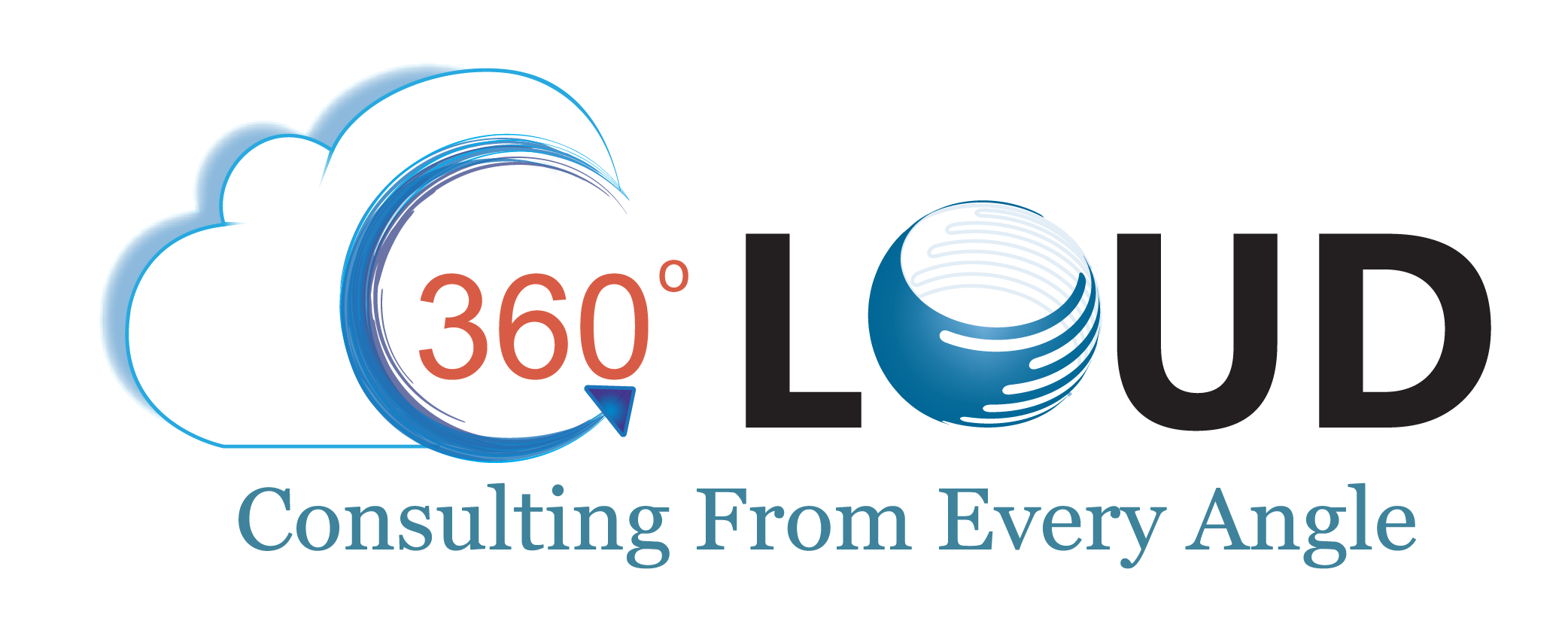Common Integration Mistakes You Can Avoid with a Trusted Salesforce Integration Company
28 Feb 2023
Table of Contents

Salesforce has revolutionized how organizations manage their business processes, allowing them to integrate CRM with their existing applications. However, the success of Salesforce integration depends heavily on the expertise and experience of the integration team; for that, having a trusted Salesforce integration company alongside is a must.
Many organizations attempt to carry out Salesforce integration in-house or with the help of inexperienced consultants and end up making common integration mistakes that can negatively impact their business operations.
In this blog, we will explore the common integration mistakes that organizations make during Salesforce integration and how they can be avoided with the help of a trusted Salesforce integration company.
By partnering with reliable Salesforce integration partners, organizations can benefit from the expertise and experience of integration specialists, who can help identify potential issues and develop effective solutions to streamline business processes and maximize ROI.
Table of Contents
Integration Mistakes You Must Avoid with a Trusted Salesforce Integration Company
Have you faced failed Salesforce integrations and didn’t know what might have gone wrong? If that’s true for you, this guide will enlighten you about the places where you need to look at and what mistakes you need to avoid while integrating Salesforce with your third-party applications.
1. Lack of a Well-defined Project Scope
One of the organizations’ most common mistakes when integrating Salesforce is not having a well-defined project scope. This can lead to a lack of clarity and direction, resulting in missed deadlines, budget overruns, and suboptimal results.
2. Not Cleaning Your Data
When data is not properly cleaned and prepared before integration, it can lead to a range of issues that can undermine the effectiveness and efficiency of the integration. Let’s discover some common issues caused by failing to clean data.
- Duplicate data: This can occur when data from different sources are integrated into Salesforce without properly de-duplicated.
- Inconsistent data: Having inconsistent data while Salesforce integration can lead to inaccurate reporting and decision-making, as well as wasted time and resources trying to reconcile conflicting data.
- Missing data: Not cleaning data before Salesforce integration can also result in missing data. This can occur when data is not properly mapped, or key data fields are overlooked.
So, just missing out on cleaning your data can cost you a lot. Get help from top Salesforce integration services and prepare your data for a smooth and safe integration process.
3. Avoiding Connectors
One of the most significant issues caused by avoiding Salesforce connectors is the need for manual data entry.
- Without connectors, data must be entered manually into each system, which is time-consuming and prone to errors. This can lead to inconsistent data and wasted resources and make it difficult to generate accurate reports and insights.
- Another common issue caused by avoiding connectors is delayed data synchronization between systems. This can lead to data inconsistencies, lost productivity, and missed opportunities to leverage real-time data for informed decision-making. Without real-time data synchronization, making critical decisions for businesses can be difficult.
- Furthermore, avoiding connectors can also lead to inefficient processes and workflows.
4. Conducting Inaccurate Data Mapping
Data mapping errors can lead to various issues during Salesforce integration, causing data inconsistencies, inaccuracies in reporting and insights, and a lack of trust in the data.
Incorrect data mapping can lead to inconsistencies and errors in the data across different systems. This can make it difficult to generate accurate reports and insights, leading to wasted resources as teams manually reconcile data.
Also, when data is not mapped correctly, it can lead to lost productivity as teams spend time trying to find and fix errors. Additionally, inappropriate mapping can lead to inaccurate data and poor decision-making.
5. Overlooking the Importance of Middleware
Middleware is critical in Salesforce integration, but it’s often overlooked.
If you don’t focus on the Middleware during Salesforce integration, it can lead to various issues.
For example, data may not be transformed correctly, resulting in inconsistencies and errors. System compatibility issues can also arise, making it difficult to transfer data between systems. Additionally, if middleware isn’t designed for scalability, it may not be able to support the organization’s growth, leading to delays and missed opportunities.
6. Ignoring Testing and Validation
Testing and validation are critical steps in any integration project, but they are often overlooked. Without thorough testing and validation, it’s difficult to ensure that the integration is working correctly and that the data is accurate and consistent.
Ignoring testing and validation can also result in security risks. Integration can create new vulnerabilities in an organization’s IT infrastructure, and without proper testing and validation, it’s difficult to identify and address them. If integration issues are not detected and addressed early on, it can lead to increased costs and delays.
7. Not Choosing the Right Integration Approach
Different integration approaches are followed by Salesforce integration services to have different levels of efficiency. Choosing an approach that is not well-suited to the organization’s needs can result in reduced efficiency. This can lead to longer processing times, reduced productivity, and increased costs.
Also, some integration approaches may not be scalable or adaptable to future growth or changes in the organization’s needs. If the organization grows or changes, it may need to overhaul the integration approach, which can be costly and time-consuming.
8. Being Too Confident About Security Issues
Salesforce is very particular about security and doesn’t even allow publishing an app over AppExchange that doesn’t pass through security review. Similarly, you need to give attention to security while Salesforce integration too.
Integrating different systems can create new vulnerabilities in an organization’s IT infrastructure. Without proper security measures, attackers can exploit these vulnerabilities to gain unauthorized access to sensitive information.
Ignoring security concerns can also result in unauthorized access to sensitive information by internal employees or other parties. This can compromise the integrity of the data and damage the organization’s reputation.
It can even lead to non-compliance with regulations, such as GDPR, HIPAA, or PCI-DSS, which can result in legal and financial consequences.
Get a Trusted Salesforce Integration Company to Avoid Mistakes
Integrating Salesforce with other systems can optimize your business processes and help you achieve your strategic goals. However, businesses can make several integration mistakes, such as not having a clear integration strategy, failing to test integrations adequately, and not considering data security concerns.
To avoid these pitfalls and ensure successful integrations, working with a trusted Salesforce integration company that can provide expert guidance and support is essential. Contact us and get along with Salesforce integration experts who can ensure a successful process without any of these mistakes.
FAQs
What does a Salesforce integration company do for a business?
A Salesforce integration company can help to integrate your existing business applications with Salesforce, ensuring a smooth and error-free process to provide you with a single view of all your information. The experts would make sure to test the process and manage the data for a safe integration, so you don’t miss out on any of your sensitive information.
How to avoid making mistakes while Salesforce integration?
To make sure you don’t end up making mistakes while integrating your third-party applications with Salesforce, you need to hire reliable Salesforce integration services. The service could manage everything from data cleaning to synchronization and testing to ensure an error-free integration.
About the author
Editorial Team – 360 Degree CloudThe Editorial Team at 360 Degree Cloud brings together seasoned marketers, Salesforce specialists, and technology writers who are passionate about simplifying complex ideas into meaningful insights. With deep expertise in Salesforce solutions, B2B SaaS, and digital transformation, the team curates thought leadership content, industry trends, and practical guides that help businesses navigate growth with clarity and confidence. Every piece we publish reflects our commitment to delivering value, fostering innovation, and connecting readers with the evolving Salesforce ecosystem.
Recent Blogs
 Salesforce Clouds
Salesforce Clouds
Pardot Salesforce Integration: How Do Both Platforms Work Together?
There has been a constant division between Sales and Marketing teams in many organizations that can directly bring harm to the business. The marketing team keeps…
Read More Salesforce Services
Salesforce Services
Is It Time for Salesforce Data Migration? Key Signs and Benefits Explained
Data is the engine of growth in the business world. Every strategic decision relies heavily on accurate and timely accessible information, whether it is launching a…
Read More Uncategorized
Uncategorized
How a Salesforce Technical Architect Ensures Your Org Grows Without Breaking
Whether it’s a new organization or small department, Salesforce has proved to be a powerful engine everywhere. It enables teams to spin up new objects,…
Read MoreReady to Make the Most Out of Your Salesforce Instance?
Our Salesforce aces would be happy to help you. Just drop us a line at contact@360degreecloud.com, and we’ll take it from there!
Subscribe to our newsletter
Stay ahead with expert insights, industry trends, and exclusive resources—delivered straight to your inbox.



